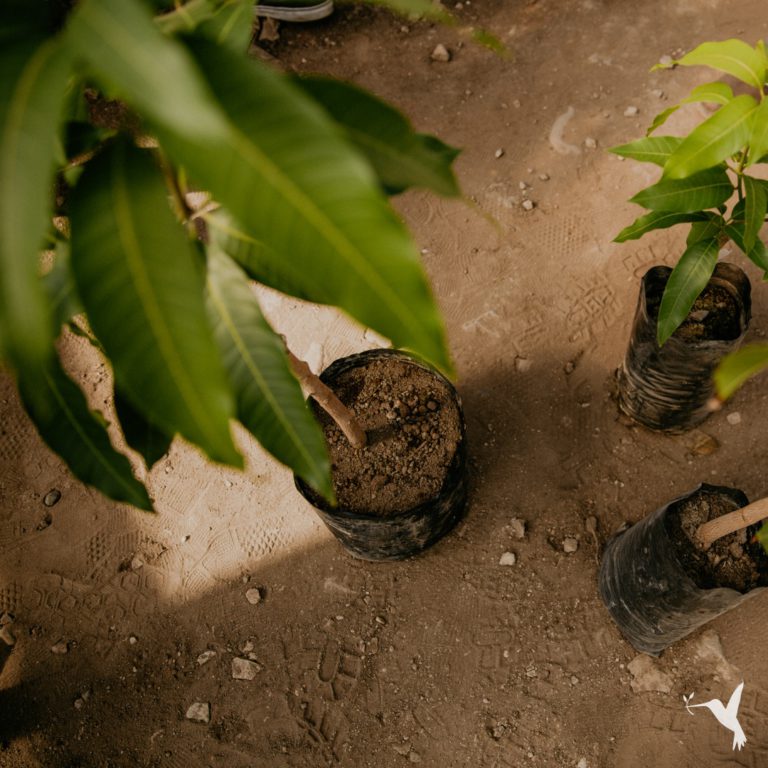Is Regenerative Leadership What You Have Been Missing at Work?
Does it seem obvious to say that the ways we live should be conducive to life? Can regenerative leadership help us measure if they are?
Lately, it feels as if many of our societal norms are not conducive to life. We have created economic and social systems based on immediacy and scarcity, financial systems that focus on short-term profit, and organizational structures that are fueled by chronic stress and dominated by hierarchy and competition.

These systems dehumanize us, dampen our vitality, make excessive waste, and extract resources unsustainably. Did we get it so wrong? Have we, as a collective, lost our capacity for deep empathic connection with life and the ecological systems that sustain life on our planet?
Disconnection is the Source of Trouble
In recent colonial history, we have been experiencing increasing levels of disconnection–from nature, from spirit, and from ourselves. This disconnect, in a time of technological hyper-connectivity, has happened in the name of linear material progress, capitalistic expansion, and convenience culture. There are many environmental and social costs of our decreasing capacity for connection.
It seems that many people often feel either overwhelmed by the problems or desensitized to them. Neither of these is a productive response. So what is then?
As we bear witness to what seems to be a breakdown of our old systems and structures of a colonial, patriarchal, hyper-consumerist culture–what is the best response?
We must rebuild the systems and structures in ways that actually contribute to life on Earth rather than destroy it. It sounds like a big task. Where do we begin?
We Begin with Regeneration
To regenerate means to renew, replenish, heal, and revitalize. Here at Producers Trust, we talk a lot about the movement towards regenerative agriculture and we connect with farms all over the world who implement and innovate regenerative agricultural processes. The idea is to farm and produce in ways that not only do less harm to the earth, but actually replenish the soil, water, and the earth in general. It is possible. And while the term may be relatively new, the practices are as old as our structured societies.
The same is true for regenerative leadership. There are many problems, but they often can be traced back to a source. That source is disconnection, and regenerative leadership may be one part of a multifaceted solution. Regenerative leadership goes beyond a set of techniques on how to lead, rather it is a shift in consciousness, a shift from separateness to interconnectedness.

The practices that lead us towards connection rather than to disconnection are not necessarily new. Rather it’s a process of unlearning and relearning. Essentially, the goal is to align with the way nature works.
We must know how already–it must be written in our collective stories.
Starting From Inside
Regeneration means to understand and work with living-system dynamics. In agriculture, that may mean the physical environment (and the supply chain system). In business or leadership, it may mean the organization and its wider ecosystem.
While the goal is to become more connected to everything around us, the process of regenerative leadership recognizes that we must start by looking within. It begins with an individual journey that leads us straight into a more connected state and leads to a dynamic process of connection with the collective. The journey requires us to open into our deeper and truer nature while understanding more fully how life works and opening to all of it. We tap into greater wisdom within ourselves, the wisdom of the collective, and from there, we become wiser humans and more holistic leaders.
This leadership style empahsizes sustainability and long-term thinking over short-term profits at the cost of the earth and human labor.
How Do We Learn Regenerative Leadership?
Practices of regenerative leadership come from many bodies of knowledge, including biology, psychology, sociology, economy, anthropology, and neurology. They also draw from methodologies such as permaculture, circular economics, biophilia, and biomimicry.
We work with and apply nature’s wisdom to four ways of knowing: intuitive, emotional, somatic, and rational. When we create coherence of these within us, we have access to a deeper kind of wisdom and whole-body intelligence. This kind of inner sustainability fosters creativity, play, and wellbeing.
We haven’t always linked leadership with intuition. Or play. Or emotions. In fact, we often have forced ourselves to keep these things separate from our work lives and from our leadership styles. However, to create holistic, well-functioning systems, we must embrace our full selves and that includes our intuitive and emotional capacities. It includes our ability to learn through play and our need to create.
Here are some of the main tips how to shift to a regenerative leadership style.
- Focus on collaboration, co-creativity, and contribution
- Seek inspiration from the natural world
- Empasize connection rather than disconnection
- Embrance every individual’s full humanity and invite authentic expression
- Commit to life-affirming business in all facets: culture, operations, strategy, and ecosystem
Who should practice regenerative leadership?
Anyone! Learning and practicing regenerative leadership is not just for CEOs and those at the top of hierarchical structures. We all have the capacity to be leaders, and we all can lead in different moments or contexts, regardless of our job titles.
Anyone who is interested in exploring and undertaking transformational change within our systems, organizations, and communities will benefit from regenerative leadership.
For those of us fortunate enough to work with Producers Trust, we know that playfulness and human emotions aren’t denied from our professional selves. We are encouraged to show up as fullest selves and honor our needs and those of others.
As with all our potential solutions, what is good for the earth is good for us. When we apply regenerative techniques to agriculture, it heals the earth. And when we apply regenerative leadership mindsets to business, we flourish individually and collectively.


